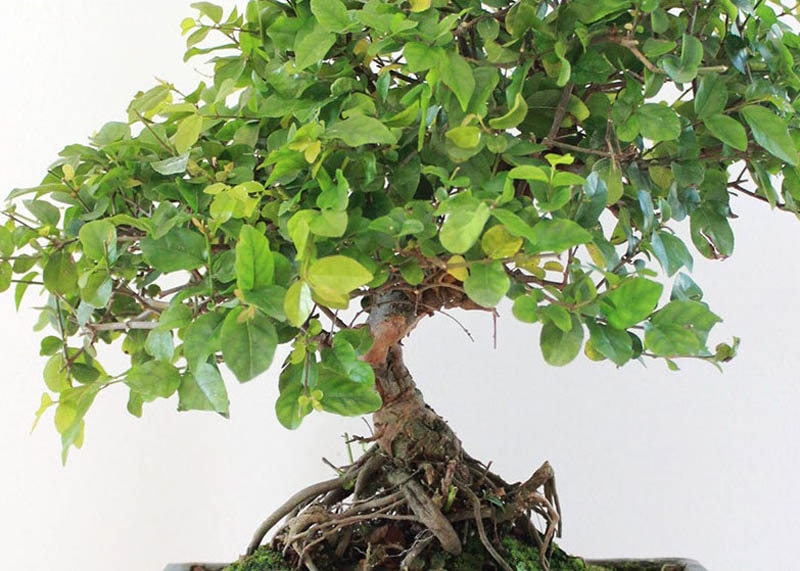Sageretia Bonsai Care guidelines
The sageretia likes a semi-shaded place outside during the warm summer, but it can also be kept indoors all year round. Indoors it should be placed at a window facing south or west, but it needs protection from intense sunlight. In winter the tree must be placed in the house or a heated conservatory at temperatures between 53° F / 12° C and 72° F / 22° C. The warmer the position the more light is needed. Grow lights can help. Try to provide high humidity.
Keep the rootball moist, but not waterlogged. Don't let the roots dry out completely because the sageretia's leaves and twigs desiccate quickly and the whole tree can die easily from lack of water. This can happen if watering is forgotten only once! The sageretia prefers a slightly acidic or neutral pH value, so avoid using very calcareous water. The tree likes high humidity and for that reason it is a good idea to often spray the foliage with lime-free water. Continue reading about watering Bonsai trees.
Watering
Free lecture from the Beginners CourseApply solid organic fertilizer every four weeks or use a liquid fertilizer every week during the growing season. In winter, in a cool place, fertilize once a month on moist soil with a liquid fertilizer, or every two weeks if the tree is kept in a warm place.
The sageretia's shoots can be trimmed back to 2 leaves all year round. Frequent trimming of the shoots helps to develop a good ramification. Healthy trees backbud very willingly if you have to do some more substantial pruning. Don't trim the sageretia in late summer if you want flowers and fruit to develop. Young branches and shoots can be wired in spring. Older branches are stiff and it is hardly possible to bend them. When the basic branch structure has been established, there won't be much necessity to wire old branches, though. Continue reading about pruning Bonsai trees.
Repot the sageretia Bonsai every two years and use a standard soil mix which should retain enough water but at the same time offer good drainage. The sageretia takes root pruning well, up to one third of the root mass can be removed. Choose slightly larger pots than normal to avoid fast drying out. Continue reading about repotting Bonsai trees.
The sageretia (bird plum Bonsai) can be propagated from softwood and hardwood cuttings. Those root easily during the growing season.
Aphids or white fly can attack the sageretia. Use a specific pesticide and try to increase humidity. In rare cases mildew can occur. Then use a specific fungicide and try to improve air circulation. If the leaves turn pale green with darker veins the tree might need extra ferric fertilizer and less calcareous water. Brown leaf tips indicate overwatering. For more detailed information on these techniques, check out our Bonsai tree care section.

Sageretia bonsai tree

Leaves of the Sageretia

Sweet plum or Bird plum bonsai

Sageretia bonsai
General information about the Sageretia Bonsai tree
The leaves are small, light green, oval and shiny. In late summer yellowish white flower panicles can develop, followed by small blue fruit. The bark is quite smooth and dark brown with with irregular patches peeling away, leaving light brown spots of young bark. This makes the bark very attractive, like a sycamore tree's. The sageretia is a popular indoor bonsai and it is produced in large quantities in South Asian countries. It does not tolerate frost and needs warm temperatures also in winter. The sageretia is often acquired by beginners, but its sensitivity to insufficient watering often causes problems. If you need help identifying your tree, take a look at our Bonsai tree identification guide.





